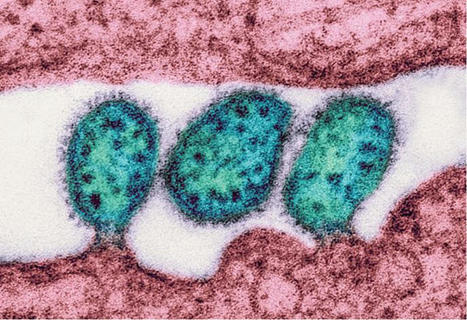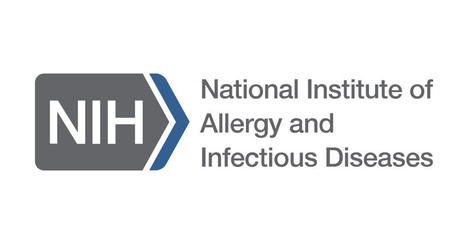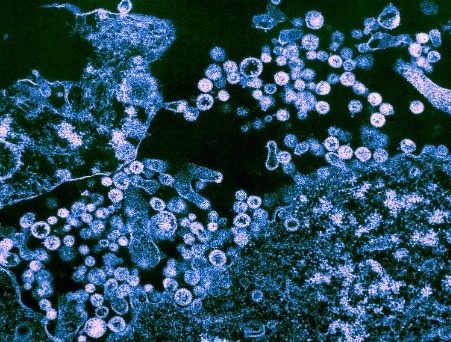 Your new post is loading...

|
Scooped by
Juan Lama
|
The patient is a soldier who had recently returned from abroad. People who may be at risk through contact with him are being traced. A case of Lassa fever - endemic to West Africa and spread by rats - has been reported in the Paris region. The patient, a soldier who had recently returned from abroad, is now in the Bégin military hospital in Saint-Mandé (Val-de-Marne). The Ministry of Health has said that an “in-depth epidemiological investigation is under way to determine the persons who may have been in contact with him”. It said his condition “does not give cause for concern”. What is Lassa fever? The fever takes its name from the town where it was first identified and isolated - Lassa in Nigeria, West Africa - and where it killed a nurse in 1969. It is now common in Nigeria, Guinea, Liberia, and Sierra Leone, and cases have also been reported in Cote d’Ivoire and Burkina Faso. There have been two epidemics in Benin in recent years; one in 2014 and another in 2016. The virus kills between 5,000 and 6,000 people per year in West Africa, and infects between 100,000 and 300,000 people. Its incubation period - from infection to symptoms - varies from two to 21 days. “The virus circulates almost constantly, especially in Nigeria, which is the worst-affected country,” said Sylvain Baize, head of the emerging viral infections unit at the Institut Pasteur, to BFMTV. “In all, it is estimated that 160 to 180 million people are potentially at risk.” How does Lassa fever spread? The virus is spread by rat faeces from the Natal rat (Mastomys natalensis), which is native to West Africa. The World Health Organization states: “The virus can also be transmitted from human to human by direct contact with the blood, urine, excrement or other bodily secretions of a contaminated person.” What are the symptoms of Lassa fever? In 80% of cases, it causes no symptoms. However, in the remaining 20%, symptoms come on gradually and become increasingly severe. They include fever, vomiting, nausea, stomach pain, and headaches. In 15% of cases, symptoms are worse, and include oedema (fluid build-up); pleurisy (inflammation of the lung lining); and oral, nasal or vaginal haemorrhage. The fever is fatal in around 1% of cases, as it goes on to cause organ failure. Of those who develop serious symptoms and do survive, some will have lasting heart problems, and 25% will become deaf. Only half of these will recover their hearing after one to three months. It is especially dangerous for pregnant women. What is the treatment for Lassa fever? So far, only one treatment has been identified. This is the antiviral agent ribavirin. This must be given very soon after infection to be effective. However, because the symptoms of the fever typically appear similar to other conditions (including malaria and dysentery), by the time the condition is confirmed, it is usually too late to give the drug. There is no vaccine yet available, although the Institut Pasteur released promising results to an international phase one trial in April. After-effects sometimes appear in those who survive this fever: 25% become deaf. Only half recover their hearing after one to three months. May 3, 2024

|
Scooped by
Juan Lama
|
A new monoclonal antibody cocktail neutralizes a dangerous virus circulating West Africa: Lassa Virus. Monoclonal antibodies are among our greatest assets in treating and preventing virus-induced disease. While the spotlight has focused squarely on Covid-19 monoclonal antibodies throughout the pandemic, antibody candidates for other severe pathogens have also made strides forward. Here we describe a new antibody cocktail that neutralizes a lesser known but nonetheless dangerous virus circulating West Africa: Lassa Virus. What is Lassa Virus? Lassa Virus is a pathogen responsible for Lassa hemorrhagic fever, which afflicts between 300,000 and 500,000 people per year, commonly in West African countries, including Nigeria, Liberia, Sierra Leone, Guinea, and Ghana. Lassa fever has a mortality rate of roughly one percent. Pregnant women are at the greatest risk of death, with up to a 90% fatality rate. The symptomatic cases present issues such as fever, headaches, vomiting, and muscle pain. Spread typically occurs via contact with infected mice excrement or urine, though direct contact spread from person to person is also common. Unfortunately, a vaccine is not yet available for the virus, and antivirals are weak at best. Lassa Virus, like SARS-CoV-2, is an RNA virus that constantly mutates. A therapy or prophylactic to fill the void of Lassa Virus drugs is needed. Lassa Virus Monoclonal Antibody Therapy Fortunately, a new candidate may be just around the corner. A group of researchers from the La Jolla Insitute for Immunology in California led by Dr. Erica Ollmann Saphire have identified a cocktail of three antibodies that bind and neutralize the Lassa Virus. This same group discovered a broadly accepted cocktail of monoclonal antibodies for Ebolavirus, which we have previously described. This cocktail arrived just in time as the current to treat the current epidemic caused by the Sudan strain of Ebolavirus in Nigeria. The new Lassa Virus therapy, denoted Arevirumab-3, is comprised of three distinct antibodies, each one binding distinct regions of the Lassa Virus glycoprotein. The Lassa Virus spike protein comes in a set of three identical subunits embedded into the membrane. The virus is synthesized as a single long polypeptide and is cleaved into three parts, a leader sequence, GP1 which encodes the receptor-binding function, and GP2 embedded into the membrane (Figure 1). 8.9F inhibits virion-cell attachment by blocking the GPC/α-DG interaction The first antibody, 8.9F, binds the top of the spike trimer, stretching across all three portions of the glycoprotein. 8.9F is an unusual antibody as the single antibody binds all three faces of the trimer. The antibody also binds the three cleavage sites of the GP1 subunits. It binds the portion of the glycoprotein that attaches to the host cell, directly inhibiting virion-cell attachment by mimicking the cell alpha-dystroglycan receptor. The 8.9F antibody also specifically binds a glycan, N119, which is required for neutralization activity. This glycan is required for alpha-dystroglycan receptor-binding, so 8.9F’s recognition is surprising. A native N89 glycan plays a central role in 12.1F/LASV GPC recognition The second antibody, 12.1F, binds to a separate site on GP1, directly interacting with N-glycans for neutralization activity. The antibody binds more membrane-proximal and has direct interaction with six crucial amino acid residues and critical glycans N89 and N109. To infect a cell, the Lassa Virus must bind the cell membrane and be engulfed by a cellular endosome. Then the protein undergoes a structural change to bind the LAMP-1 protein in the endosome interior. Binding to LAMP-1 is essential for fusion of viral and cell membranes and entry into the cytoplasm where replication occurs. 37.2D neutralizes LASV by locking the GPC trimer in an inactive configuration. The third antibody, 37.2D, binds two adjacent subunits of GP2. The antibody stretches across subunits, locking the trimer in place by binding conserved peptides and conserved glycans N390 and N395. 37.2D is special in that it attacks GP2 at a unique angle, stabilizing the pre-fusion trimer, preventing fusion activation and, therefore, infection. These three mechanisms work together to yield a highly effective antibody cocktail. One critical question for monoclonal antibody treatment, is can the virus escape via mutation in the binding sites? Dr. Ollmann Saphire's team shows that such is the case for treatment with a single 8.9 F antibody. However, no resistance mutations arose when using the cocktail of all three antibodies, nor was the virus capable of escaping. The Arevirumab-3 antibody may provide a long-awaited answer to the lack of treatment and prevention of Lassa infections. This is particularly important for cases involving pregnant women and their fetuses. It will be important to reduce the costs of this antibody cocktail as much as possible so that it is available when needed in West Africa. Current technologies allow monoclonal antibodies to be produced at $200 and $250 per gram. The next step in the development of the control of Lassa Fever is the development of a vaccine effective against all Lassa Virus variants. This work may serve as a guide for the creation of such a vaccine.

|
Scooped by
Juan Lama
|
One of the keys to bringing a viral outbreak under control is rapid detection and diagnosis, which depend on the availability of fast, low-cost, easy-to-use tests that don't require labs or expensive equipment to process them. Scientists at the Broad Institute of MIT and Harvard and collaborators in the United States, Nigeria, and Sierra Leone have now validated such tests for Ebola and Lassa—two of the deadliest and most transmissible human viruses—in settings with limited infrastructure. The work appears in Nature Communications. The diagnostic tests use the CRISPR-based SHERLOCK assay to detect low levels of virus in patient samples and generate either a fluorescent readout or a result on a paper strip. The test can be tailored to detect specific viruses from certain regions, requires only a simple heat block and basic supplies to run, costs less than US$1 per sample, could be used on saliva or urine—eliminating the need for blood draws—and can return results in less than an hour. The tests also use a rapid chemical and heat treatment called HUDSON to inactive the virus in patient samples. HUDSON makes the patient samples safer for clinical staff to handle in a low-tech environment, and eliminates the need to extract a virus's genetic material from the samples before analyzing. The research team was led at Broad by Kayla Barnes, an NIH Fogarty K fellow at the Harvard School of Public Health and Broad Institute, Anna Lachenauer, a medical student at Stanford University School of Medicine, and institute member Pardis Sabeti, a professor at Harvard University and investigator with the Howard Hughes Medical Institute. To showcase SHERLOCK's field utility, team members led by Christian Happi at Redeemer's University in Nigeria deployed a Lassa-specific assay during a recent Lassa fever outbreak—the first use of SHERLOCK in a low/middle income country. The team also compared the diagnostic against a standard RT-qPCR assay for Lassa. Collaborators at Kenema Government Hospital in Sierra Leone and at the US Army Medical Research Institute of Infectious Diseases benchmarked an Ebola-specific version of the SHERLOCK assay, using samples collected during the 2014-16 outbreak in Sierra Leone and more recent outbreaks in the Democratic Republic of the Congo. The NIH Integrated Research Facility also validated HUDSON's ability to heat-inactivate Ebola virus in their BL4 facilities, further establishing the safety and efficiency of this step. The SHERLOCK assays performed as consistently as, or better than, other diagnostics in these validations—demonstrating the platform's potential for clinical use in the future in resource-limited areas. The team also developed a mobile phone app called HandLens, spearheaded by Andres Colubri, assistant professor in the Bioinformatics and Integrative Biology program at the University of Massachusetts Medical School, that can read and immediately report paper strip SHERLOCK results. The tool can aid in situations where the paper strip gives a faint signal that is challenging for a clinician to interpret. This app can be adapted for use on any smartphone or tablet, according to the researchers, allowing a clear, unbiased diagnostic readout. Published in Nature Communications (August 17, 2020): https://doi.org/10.1038/s41467-020-17994-9

|
Scooped by
Juan Lama
|
A new study, published in the August 8, 2019, issue of Cell by a team of researchers led by Instructor Kathryn Hastie, Ph.D., and Professor Erica Ollmann Saphire, Ph.D., at La Jolla Institute for Immunology (LJI), identified and then reverse engineered the molecular properties shared by antibodies that are particularly efficient at inactivating or “neutralizing” the virus. The team’s findings also revealed that most neutralizing antibodies bind to the same spot on the surface of Lassa virus, providing a map for rational vaccine design.As this year's Lassa fever outbreak in Nigeria is finally ebbing, the total tally came to more than 600 infected people, one-quarter of them dead. Thousands more die each year, uncounted in rural villages throughout West Africa. With an annual wave of infections and new viral strains emerging, it has never been more important to understand the characteristics of a broadly protective immune response in order to develop effective treatments, or better yet, a vaccine. “The beauty of structural biology is that it gives you the ability to dissect the molecular details at high resolution to explain precisely how something works,” says structural immunologist Ollmann Saphire. “Once you do, you have a blueprint to engineer potent immunotherapeutics or a vaccine that elicits the desired immune response.” Identified 50 years ago and named for the town in Nigeria where the first known cases cropped up, Lassa virus is endemic in West Africa where it infects hundreds of thousands of people every year. For the majority of infected people, symptoms are mild and the infection mostly goes undiagnosed. But in 20 percent of patients, the disease causes a more serious illness including neurological symptoms and hemorrhage, which can result in multi-organ failure and death. For the current study, Hastie compared the structure of three different neutralizing antibodies of varying potency—high, moderate and low—bound to the glycoprotein. The side-by-side comparison highlighted specific amino acid residues that drive high potency and enabled the researchers to precision-engineer mediocre antibodies to turn them into highly effective ones. “Not only were we able to increase the antibody’s potency, which means you can deliver much less antibody, we were also able to make it pan-Lassa. It can hit every Lassa virus lineage characterized so far,” says Hastie. But few naturally infected people generate neutralizing antibodies and current vaccine efforts focus on eliciting T cell immunity. “Historically, researchers have found that development of antibodies is not a good correlate of protection in natural Lassa infections,” says Hastie. “It is actually very difficult to induce neutralizing antibodies.” The study was published in Cell on August 8, 2019: https://doi.org/10.1016/j.cell.2019.07.020
|

|
Scooped by
Juan Lama
|
The Antiviral Program for Pandemics (APP) team, along with experts from across the National Institutes of Health (NIH) and Biomedical Advanced Research and Development Authority (BARDA), has drafted Target Product Profiles (TPPs) for potential direct-acting antiviral therapeutics candidates targeting several key viruses of pandemic potential. These TPPs should be considered ‘living documents’ that are never final but may be useful starting points for consideration by therapeutics developers who are drafting TPPs for their specific candidates. Also, the example TPPs are not intended to provide details about product requirements for funding or other support from USG or other funders. Instead, these sample TPPs are being provided as tools for scientists working toward therapeutics product development of direct-acting antivirals for use in potential future outbreaks or pandemics. We are happy to receive feedback on these sample TPPs and may make updates/revisions or add TPPs for additional clinical indications in the future, so please monitor this page for updates and send any feedback to APPSubmissions@mail.nih.gov

|
Scooped by
Juan Lama
|
Long before COVID-19, scientists had been working to identify animal viruses that could potentially jump to people. These efforts have led to a Web-based platform called SpillOver, which ranks the risk that various viruses will make the leap. Developers hope the new tool will help public health experts and policymakers avoid future outbreaks. Jonna Mazet, an epidemiologist and disease ecologist at the University of California, Davis, has led this work for more than a decade. It began with the USAID PREDICT project, which sought to go beyond well-tracked influenza viruses and identify other emerging pathogens that pose a risk to humans. Thousands of scientists scoured more than 30 countries to locate and identify animal viruses, discovering many new ones in the process. But not every virus is equally threatening. So Mazet and her colleagues decided to create a framework to interpret their findings. “We wanted to move beyond scientific stamp collecting [simply finding viruses] to actual risk evaluation and reduction,” she says. The team was surprised to find very little existing research on categorizing threats from viruses that are currently found only in animals but are in viral families that can likely cause disease in people. So the researchers started from scratch, identifying 31 factors pertaining to animal viruses (such as how they are transmitted), to their hosts (such as how many and varied they are), and to the environment (human population density, frequency of interaction with hosts, and more). These are summed up in a risk score out of 155; the higher the score, the more likelihood of spillover. Cornell University virologist Colin Parrish, who was not involved in the study, says the factors examined were important in previous spillovers. But he notes that other viruses' crossover risk may be heightened by unforeseeable factors that crop up later. “It's a bit like the stock market,” he says. The new study, published in the Proceedings of the National Academy of Sciences USA, ranks 887 animal-borne viruses. Twelve known human pathogens scored at the top—with the virus that causes COVID-19 in second place, just under the rat-carried Lassa virus. (Influenza would have topped the list if included, Mazet says, but flu variants are already tracked elsewhere.) Parrish notes that the list also omits insect-borne viruses and those from domesticated animals. “This is a work in progress,” he says. “I'm sure it will be iterated into a more powerful tool as more information and data become available. SpillOver is publicly editable, and scientists around the world are already contributing their own findings. Mazet hopes it catches the attention of public health practitioners and leaders, too. With targeted action, Mazet says, “we can ensure that we don't have these spillovers at all. Or if we do, we're ready for them—because we're watching.” See also research published in P.N.A.S. (April 13, 2021): https://doi.org/10.1073/pnas.2002324118

|
Scooped by
Juan Lama
|
The vaccine provided protection from Ebola virus, Sudan virus, Marburg virus and Lassa virus. Scientists funded by the National Institutes of Health have developed an investigational vaccine that protected cynomolgus macaques against four types of hemorrhagic fever viruses endemic to overlapping regions in Africa. The University of Texas Medical Branch in Galveston and Profectus BioSciences of New York are developing and testing the candidate quadrivalent VesiculoVax vaccine, with support from NIH’s National Institute of Allergy and Infectious Diseases (NIAID) and Redeemer’s University in Nigeria. The newly published study in the Journal of Clinical Investigation describes how the vaccine was created using a live-attenuated (weakened) vesicular stomatitis virus to deliver proteins that elicit protective immune responses. The proteins are from Ebola virus (Kikwit strain), Sudan virus (Boniface strain, which also causes Ebola virus disease), Marburg virus (Angola strain) and Lassa virus (Josiah strain). There are no licensed vaccines to provide protection from any of those viruses — all of which can cause severe disease and death — although the European Medicines Agency has recommended licensing a VSV-Ebola vaccine. Importantly, the monkeys infected in the study were exposed to different strains of Sudan virus (Gulu) and Lassa virus (0043/LV/14) than those in the candidate vaccine to help the researchers determine whether the vaccine would be cross-protective. Lassa 0043/LV/14 is circulating in an outbreak in Nigeria that began in 2018. Previous studies indicate that the investigational Ebola virus (Kikwit) vaccine will protect against other strains of Ebola virus. The scientists inoculated 20 macaques with a primary and booster dose of quadrivalent VesiculoVax. The animals had five blood draws to check for an immune response, including on the day of initial vaccination and on days 10 and 28, then on day 56 when they received a booster inoculation, and again on day 66. On day 84 scientists infected the macaques with the four different hemorrhagic fever viruses and monitored them to day 112. Twelve additional macaques in the study who were infected with the four viruses but not vaccinated all became sick, but none of the vaccinated animals did. Only one of the 20 vaccinated animals had any of the four hemorrhagic fever viruses detectible (Lassa) following the study. The scientists state that the addition of the Lassa virus component to their multivalent vaccine is an exciting research advance as they already had developed an investigational trivalent vaccine that provided protection against Ebola, Sudan and Marburg viruses. The researchers now plan further vaccine tests against other strains of Lassa virus, and they want to further evaluate whether a single-dose quadrivalent vaccine appears safe and effective. Published in the Journal of Clinical Investigation (October 22, 2019): https://doi.org/10.1172/JCI131958
|



 Your new post is loading...
Your new post is loading...















